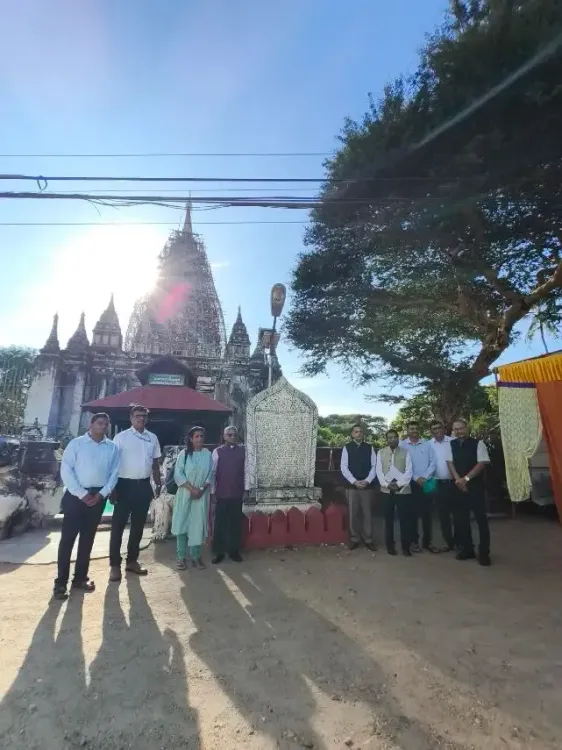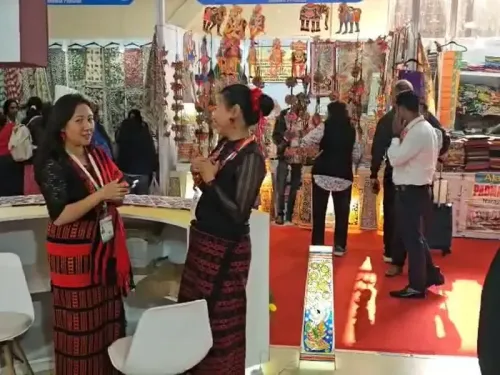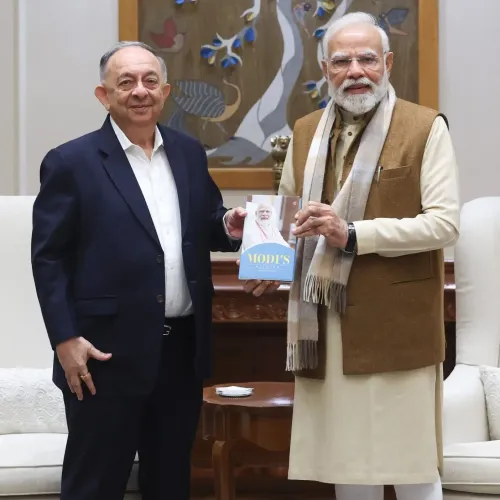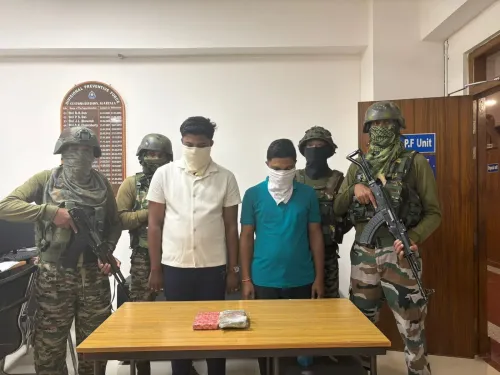How Does ASI's Mahabodhi Phaya Exhibition Illuminate India-Myanmar Spiritual Connections?

Synopsis
Key Takeaways
- ASI's role in preserving cultural heritage is crucial.
- The exhibition highlights the spiritual ties between India and Myanmar.
- Local artisans and ASI experts collaborate for restoration.
- The Mahabodhi Pagoda symbolizes shared cultural history.
- Future phases aim to consolidate and expand on previous successes.
Naypyidaw, Oct 4 (NationPress) The Archaeological Survey of India (ASI) has curated a remarkable exhibition at the Buddhist temple Mahabodhi Phaya in Bagan, Myanmar, featuring striking before-and-after images of restored monuments. This event not only showcased ASI's vital role in the restoration efforts but also underscored the enduring spiritual connections between India and Myanmar.
The exhibition was attended by Abhay Thakur, the Indian Ambassador to Myanmar, alongside Kyaw Oo Lwin, the Director-General of the Department of Archaeology and National Museum, at Monument no. 1670, Mahabodhi Phaya.
Ambassador Thakur engaged with the ASI team and local artisans who have been pivotal in the restoration process.
“The ASI exhibition, featuring images of monuments pre- and post-restoration, highlights their significant contributions. Mahabodhi Phaya Bagan, a replica of Bodh Gaya from 1215 AD, serves as a reminder of our long-standing spiritual connections,” the Indian Embassy in Myanmar shared on X last Saturday.
The ceremonial opening of Phase II of the Restoration and Conservation Works for pagodas affected by earthquakes in Bagan was held at the Mahabodhi Pagoda on Friday, coinciding with the exhibition.
A four-member ASI team, collaborating closely with the Department of Archaeology in Bagan and supported by local craftsmen, is set to continue work on around 50 monuments. The ASI's experts in chemical preservation and physical restoration bring years of experience, having previously restored the iconic Ananda Temple and 11 monuments during Phase I of the Bagan restoration project,” a statement from the Embassy noted.
It also highlighted that 11 restored monuments (22 works) from Phase I were officially handed over to Myanmar on December 13, 2024.
A photo exhibition showcasing Phase I was also introduced during the event. The upcoming Phase II of the project aims to build upon the success achieved so far.
This initiative reflects the Indian government’s unwavering dedication to the long-term preservation of Myanmar's precious religious heritage and to reinforcing the deep-rooted cultural and spiritual ties between the peoples of India and Myanmar.









